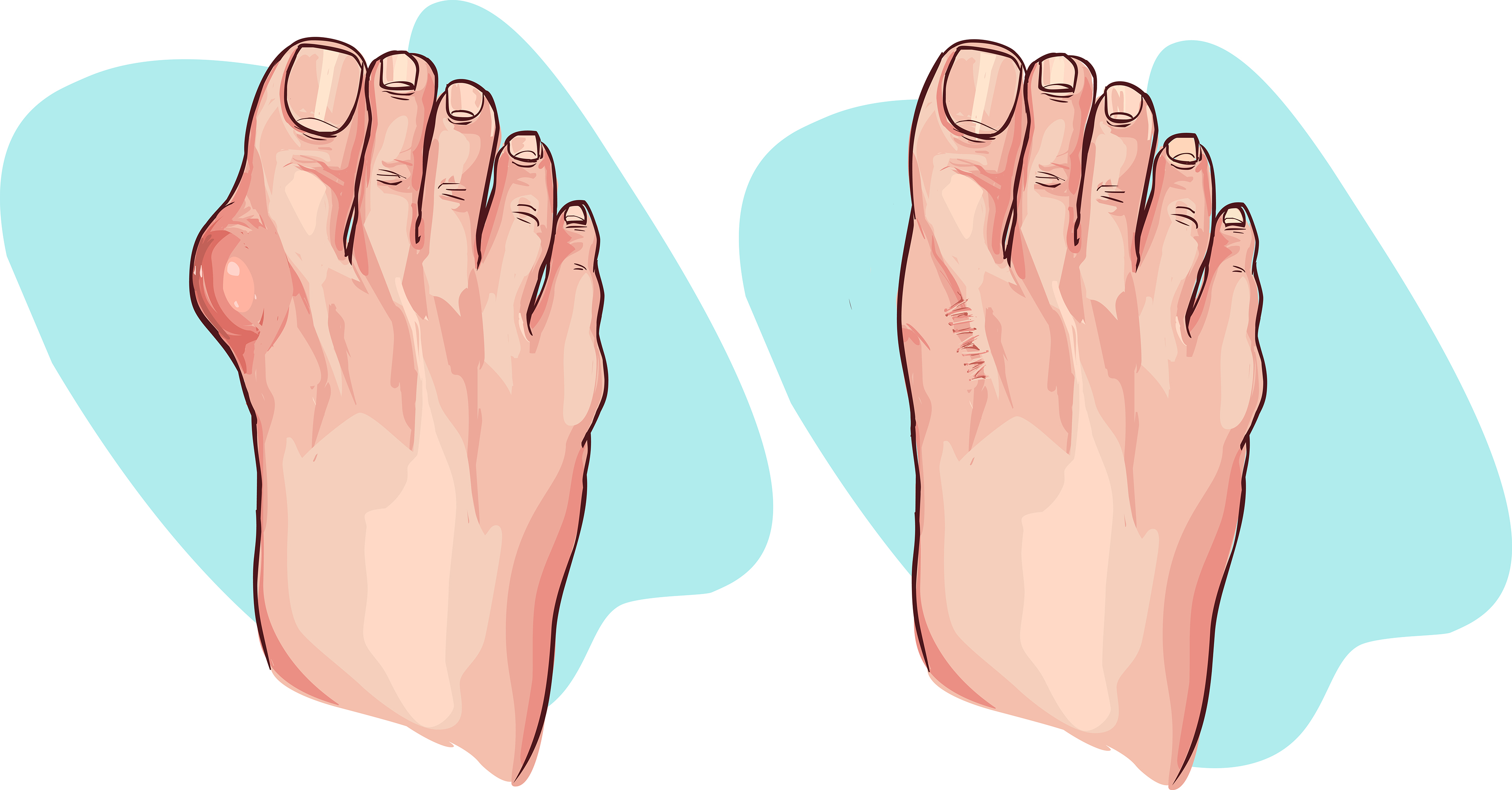Hallux valgus
About
Hallux valgus is the most common foot deformity, typically manifesting as a protrusion of the bone at the base of the big toe, causing the big toe to drift towards the other toes. This deformity can result in pain, swelling, and restricted movement.
Candidate
Candidates for Hallux valgus treatment include individuals experiencing painful symptoms, restricted mobility, or other complications caused by this foot deformity. Treatment is recommended when conservative measures, such as wearing comfortable footwear or orthopaedic inserts, do not yield satisfactory results.
Preparation
Prior to treatment, the physician will carefully assess the degree of the deformity and tailor the treatment plan according to the patient's needs. Fasting from food or drink may be necessary before the procedure.
Treatment
There are various methods for treating Hallux valgus, including conservative measures such as wearing special shoes or orthopedic aids, physiotherapy, and surgical options such as osteotomy or arthrodesis, depending on the severity of the deformity.
Result
After successful treatment, a reduction in pain, improved mobility, and reduced discomfort during walking are expected. Postoperative rehabilitation may be crucial for achieving optimal treatment outcomes.
Precautions
Following treatment, it is important to follow the physician's instructions and participate in physical therapy to achieve complete rehabilitation. Regular check-ups are also important to ensure the long-term stability and functionality of the foot.
ZagrebMed patient reviews
F.A.Q.
Hallux valgus is a deformity of the big toe joint that causes the big toe to angle outward towards the other toes. It often results in a bony bump on the side of the foot at the base of the big toe.
Hallux valgus can be caused by various factors, including genetics, wearing ill-fitting shoes (especially those with narrow toe boxes), foot structure abnormalities, and certain medical conditions such as arthritis.
Common symptoms of hallux valgus include pain and discomfort at the base of the big toe, swelling, redness, restricted movement of the big toe joint, and the development of a visible bony bump.
In some cases, conservative treatment measures can help alleviate the symptoms of hallux valgus. These may include wearing wide-toed shoes, using protective padding or orthotics, taking over-the-counter pain relievers, and performing foot exercises. However, these treatments cannot correct the deformity itself.
Surgery for hallux valgus is typically considered when conservative treatments fail to provide relief or when the deformity causes severe pain, difficulty walking, or significant functional impairment. The decision for surgery is made on an individual basis, taking into account the severity of the deformity and the patient's symptoms.
Several surgical procedures can be used to treat hallux valgus, depending on the severity of the deformity and other factors. Common procedures include bunionectomy (removal of the bony bump), osteotomy (reshaping of the bones), and arthrodesis (fusion of the affected joint).
Recovery time can vary depending on the type of surgery performed and individual factors. Generally, it takes several weeks to a few months for the foot to heal completely. Physical therapy and rehabilitation exercises may be recommended to restore strength and flexibility.
While surgery aims to correct the deformity, there is a small chance of recurrence in some cases. Following post-operative instructions, wearing proper footwear, and taking steps to address underlying contributing factors can help minimize the risk of bunion recurrence.
While hallux valgus may have a genetic component, certain measures can help reduce the risk or slow the progression of the condition. These include wearing comfortable shoes that provide adequate toe room, avoiding high heels and narrow-toed shoes, maintaining a healthy weight, and performing exercises to strengthen the foot muscles.
You should consult with an orthopaedic surgeon specialising in feet and removal of hallux valgus. Contact us and we will arrange it for you.

Send an inquiry for the treatment
Start your way towards a successful treatment today. Fill out the form with your data, choose the service you need and we will connect you with the top medical experts in Zagreb.
